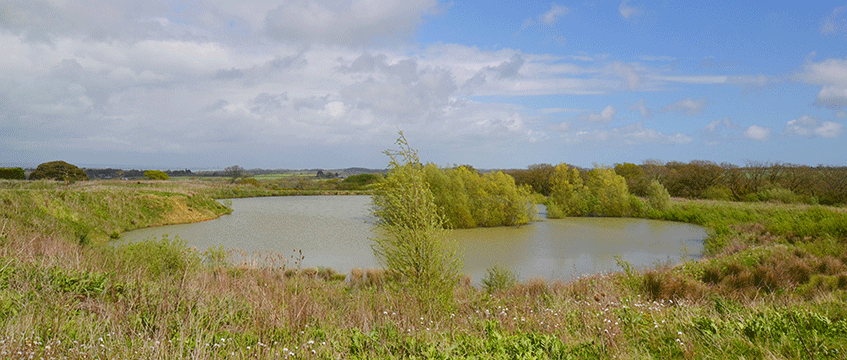Natural England’s nutrient neutrality guidance is attracting headlines. While aiming to stop phosphate and nitrate pollution, the Home Builders Federation estimates the guidance is already holding up 120,000 homes in planning.
So what is it trying to solve and how is policy developing in this area?
Nitrate and phosphorus impacts
To understand why the nutrient issue is a problem for society at large – as well as for housebuilders – a quick science lesson is needed.
Nutrients are the chemicals that sustain life. Nitrogen and phosphorus are absorbed by plants to photosynthesise. Problems occur when these nutrients become overconcentrated in rivers, lakes and streams and this often arises from wastewater from existing developments and fertiliser runoff from farmland. The resulting excessive growth of algae reduces oxygen levels and kills water life.
Nitrates and phosphates also make water unsafe to drink, which means higher purification costs for water companies – and higher bills for consumers.
The problem is being exacerbated by climate change. Drier summers mean higher concentrations of nitrates and phosphates in our water, increasing the environmental impacts. The need for legislative and policy intervention is unavoidable.
Government policy
The government’s Environmental Improvement Plan 2023 sets a goal of reducing nitrogen, phosphorus and sediment pollution from agriculture into the water environment by at least 40% by 2038, compared with a 2018 baseline.
To achieve this, the government is creating a new duty on water companies to upgrade wastewater treatment works by 2030 through the Levelling-up and Regeneration Bill, which will also set nitrogen and phosphorous nutrient pollution standards.
This will be backed up by a nutrient credit scheme, which is a key part of Natural England’s nutrient neutrality approach.
Natural England’s guidance
Natural England is responsible for ensuring England’s natural environment is not only protected, but improved. It has an advisory role in relation to the planning process and is a statutory consultee.
In March 2022 it wrote to 74 local planning authorities – across 22 river catchments – with sensitive habitats known as “habitats sites”, saying they must undertake Habitats Regulations assessments for all development proposals which may give rise to additional nutrients likely to significantly affect those sites, in compliance with the Conservation of Habitats and Species Regulations 2017.
In its accompanying Nutrient Neutrality Principles, Natural England requires an ‘’appropriate assessment’’ by local planning authorities that new housing proposals in these areas will be “nutrient neutral” or better to secure planning approval.
Key principles include:
- Scientific and practical certainty that there is confidence that the nutrient neutrality measures will deliver the required nutrient reduction or mitigation and will be implemented. The measures need to be secured and funded for the lifetime of the development’s effects.
- Nutrient neutrality measures must be preventative to avoid the effects of excessive nutrients occurring in the first place, rather than offsetting or compensating for damage.
A legal example
Natural England’s nutrient neutrality approach was tested and broadly supported in the courts last year in the case of R (on the application of Wyatt) v Fareham Borough Council and another [2022] EWCA Civ 983. The LPA granted planning for an eight-unit development in the Solent and Southampton Water Special Protection Area. Natural England indicated it had no concerns with the development and approved the nutrient budget, but a local residents’ group applied for judicial review.
The question was whether the council had carried out a sufficient “appropriate assessment” for the purposes of complying with the 2017 Regulations.
The Court of Appeal agreed the council was entitled to have regard to Natural England’s approval of the nutrient budget and concluded the assessment was lawful, confirming the High Court’s decision to dismiss the application.
Nutrient credits
The nutrient neutrality approach supports the use of mitigation measures. Developers in areas within sensitive river catchments can show that their development is ‘’nutrient neutral’’, either by using an on-site or an off-site solution, or a combination of the two.
Nutrient credits will be available through Natural England’s nutrient mitigation scheme. The first scheme launches next month for the Tees catchment, with credits priced at £1,825 per unit, while schemes in Kent and Suffolk will follow.
However, it is worth noting the rollout of the nutrient mitigation scheme is relatively slow, with more than 20 catchments still waiting for their schemes to be launched.
Biodiversity net gain and nutrient neutrality
The influence of nutrient neutrality is also likely to be felt beyond the sphere of habitats sites.
From November 2023, biodiversity net gain regulations will demand all new schemes leave the natural environment in a better state than before the development. Nutrient neutrality will contribute to the delivery of BNG in appropriate cases.
Furthermore, some rivers and water bodies are sites of special scientific interest. In those cases, LPAs have a duty to take reasonable steps to further the conservation and enhancement of their significant features. LPAs may take a similar approach to nutrient neutrality to ensure compliance with that duty.
Embrace change
Nutrient neutrality is an example of how the rules of property development are changing with environmental costs being captured and passed on to developers and homebuyers. Costs, complexity and delays are increasing as a result.
For developers with projects in areas impacted by nitrates and phosphates, understanding the nutrient neutrality guidance and the available mitigation schemes will be an essential part of the planning process going forwards.
Andrew Waite is a consultant and Stephen Sykes is a senior solicitor at Davitt Jones Bould










